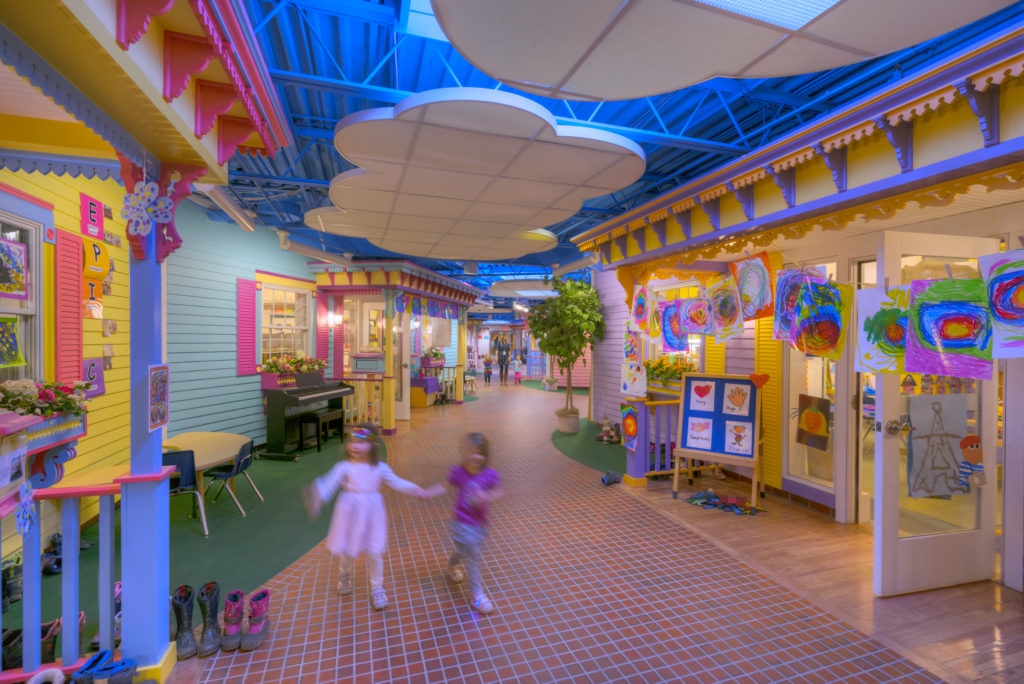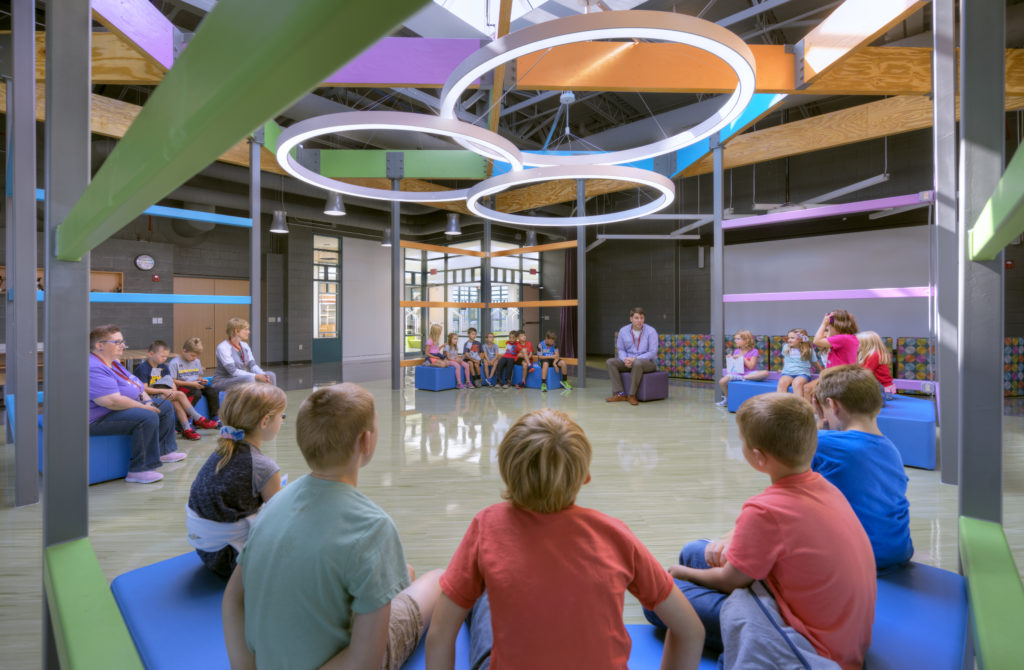When summer ends and the crisp fall air starts to settle in, it stirs nostalgia of our school days past. We reminisce about the smell of a new box of crayons, the feel of a new backpack on our shoulders, and the ruse for new experiences and endless possibilities. Can you picture it? Do you remember it?
Our earliest adventures in learning, our first experiences with school instilled lasting impressions of positivity, warmth, exploration, and discovery. Sunshine Street Nursery School may have been tucked away in the neighborhood church basement decades ago, but the joy of splashing at the water table, the admiration for that very first teacher, and the excitement of forging new friendships and new understandings of the world are memories that will always be treasured by us students of lifelong learning.
The Early Childhood Education industry by definition provides basic preparatory education courses for children two years old to those reaching school-entry ages. Current national level conversations point to anticipated, mandatory programming in the near future for prekindergarten students, assuring the best possible foundation for success for all students. As the guides to the future of educational experience in this country, it is imperative to facilitate equity in and access to the progressive ideals of modern teaching and learning in all segments of our industry.

It is important to reflect on what the thought-leaders in educational theory have previously discussed. Froebel, Mann, Montessori, Bruner, and Piaget were the first to demonstrate the potential of using a child’s natural inclination of play for learning; that a child’s relationship to their environment has a greater influence than that of an adult. Since that time, research findings and ideologies have evolved to suit today’s modern early learner.
….if we want to design environments fit for the needs of today’s youngest of learners, we have to have an intimate understanding of the whole child, as it evolves through continued research and scientific investigation.
Harvard Graduate School of Education professors Lesaux and Jones tell us much of the research investigating the key patterns of today’s early education and care are not only outdated, but are also misrepresentative of the demographics of our children and their life situations. They are leading the “Early Learning Study at Harvard,” which they hope will eventually underscore the importance of universal “high-quality” early education and how to maintain its positive effects into adulthood.
Enhancing early learning experiences begins with understanding the user – these youngest of learners. They are the ones who touch, feel, move…even hear their way to understanding – stabilizing neural connections through song and dance, play and pretend. Recent research into brain science finds that a young child’s ability to thrive in the future will depend heavily on the quality of their early experiences, even more so than the genetics they’ve been born with. This is especially true for complex and advanced skills and competencies that are social, emotional, creative, and cognitive in nature (Big Ides Little Learners Early Childhood Tends Report 2019).
The Institute for Learning & Brain Sciences (I-LABS) at the University of Washington is trailblazing an investigation into understanding the physiological connections between brain development and evidence–based programming. The importance of their research validates the strength of influence the cultural environment has in altering a child’s potential for success…calling upon our professions to take on a new sense of urgency.

As designers, this is where we step in…making connections between research, understandings of the user, and their needs to the vision for the built environment. It is our job to relate this ideology to creating physical spaces specifically planned for early learners. We should be encouraging school communities to dream big and be unapologetically creative. We need to engage and nurture through joy, warmth, and excitement inherently molded into every aspect of these designs so that intentionality oozes out like the best batch of slime!
We concur that the following pillars as presented in the article “5 Building Blocks of Early Childhood Design” by Charles Tyler, AIA and Carla Remenschnieder, RID, IIDA, have advanced a framework for honoring these youngest of learners:
- Sensory Learning
- Movement
- Imagination
- Nature
- Empathy
These building blocks can be a guide to elevating quality of experience for today’s whole child. A designer must understand that sensory learning, movement, imagination, nature, and empathy all contribute to a young learner’s development. Students learning styles, life situations, and physiological development are all criteria to be considered in your next adjacency matrix and/or program of requirements. These intricacies should not only be implemented across both your indoor and outdoor learning spaces, but be thoughtfully considered to include every move, every activity, and every anticipated function of the designed environment through the complex of these youngest of learners.

We find that the first consideration should be the site and arrival sequence. How might scale and contextual feel answer the questions “Am I safe here?”, “Do I belong?”, “Is this place for me?” The “Hug and Go Zone” is real! We address these notions of experience-driven design with the following concepts:
- The Administrative Welcome Center is the “Front Door” to your district, communal in nature and a catalyst for community and family involvement.
- Learning Streets are injected with opportunities for Indoor Play and “Sensory Trails.”
- Common Spaces become fastened to be boundless to the imagination of a small child and yet flexible to the creativity of loving instructors.
- Learning Studios are organized to encourage micro and macro levels of movement throughout the facility and throughout the day.
- Purposefully carved out “enclaves” are intended to cultivate the calm of recluse.
- Discovery Centers will foster excitement by weaving an understanding of the natural world, self-expression, and relationships among patterns, numbers, and shapes through tools, simple machines, and child-size engineering.
- Empathetic motivations only can instill a sense of comfort, warmth, and safety.
In conclusion, if we want to design environments fit for the needs of today’s youngest of learners, we have to have an intimate understanding of the whole child, as it evolves through continued research and scientific investigation. Only then can we shape the environments that will best support them. It is their interactions, perceptions, and understandings of the world around them that are most strongly influencing their development. We should fiercely pursue the definition of and access to “high quality” early learning experiences, because the thoughtfully designed environment is proving to be the cornerstone of a solid foundation for success in learning and throughout life.

Blocks may have been our favorite center, drawing and painting at the easel our preferred outlet for expression, but the most exciting adventure lies in what comes next for us…how will we use the skills we’ve acquired to elevate opportunities for tomorrow’s youngest of learners? From the progress made in Early Educational Environments through today, we think Sunshine Street Nursery School would be so proud!

